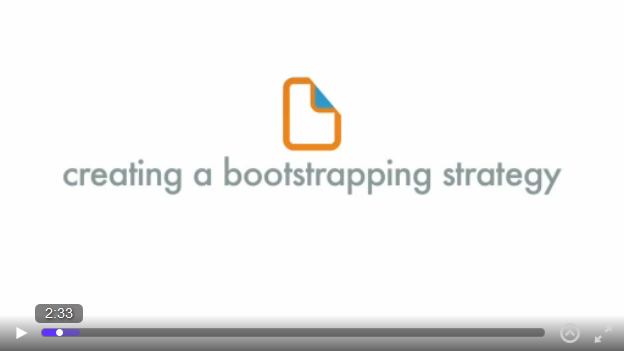
Venture capital is often seen as the holy grail of small business financing, but it isn't for everyone. As most seasoned entrepreneurs will tell you, seeking out venture funding can be a long, expensive process, with some unexpected legal and accounting costs along the way. If you do eventually secure venture capital, you will have to give up part of your control over your own business, which means increased accountability on your part.
For many entrepreneurs, the benefits of venture financing vastly outweigh the drawbacks. However, some entrepreneurs decide to take a different approach, which means they might turn to bootstrapping as a way to keep their startup going strong. Bootstrapping refers to the process of starting a business without external investors, which involves making the most of the finite resources at your disposal. Though bootstrapping is no walk in the park, it allows entrepreneurs to maintain a greater measure of control of their firm's operations. For more information on achieving success by bootstrapping, check out the tips below.
1) Pick the right business model
It's important for all entrepreneurs to pick a viable, scalable business model, but entrepreneurs starting a business with little to no external funds need to be particularly strategic in this respect. First, consider picking a business that is low capital and will require no more than a minimal amount of overhead. Second, try picking a value proposition that is quick to get a response from the customer. If you need to invest in years of R&D before you can produce a minimal viable product, you might run into difficulties. Third, if possible, consider adopting a recurring revenue model. When customers agree to pay you on a recurring basis, you don't need to invest as much time and money into searching for new customers, which allows you to make the most of your existing resources.
2) Function at a minimal level
The biggest challenge behind bootstrapping a business lies in the need to do a lot with very little. As a result, it's important to function at a minimal level. What does that mean? If you need legal advice, rather than hiring a pricy lawyer, try to use whatever free legal service might be available. If you need to advertise, rather than turning to an expensive firm, consider some cost-free methods both online and offline. You might not be able to accomplish everything you want, but you can find low-cost ways to accomplish everything you need.
3) Stay motivated
When you're working on your own without investors or advisors or partners to keep your fire lit, it can be easy to lose motivation. As a result, it's important to find ways to keep yourself focused so you can continue pushing on even when things get tough. First, try to find something that interests you. When you have an idea you're passionate about, it can be easier to stay on the right course. Second, do your best to maintain an active network. Small business accelerators, free mentorship programs, local events—these are all ways to stay active with people who understand your struggles and can lend their support. Third, set small, achievable goals. When you segment your operations into a series of goals you can work towards, you end up feeling like you're accomplishing more, which will help you maintain your positivity and enthusiasm.
4) Know when it's time to change it up
The most important thing to remember is that the decision to bootstrap a business isn't permanent. Many entrepreneurs have been able to develop thriving business without ever seeking out external funding, while others stick with bootstrapping until they're ready to scale and expand, at which point they turn to venture capital firms or other investment sources. Ultimately, the choice is yours. Pay attention to the roadsigns and continue to pivot and iterate through different business models until you find one that works for you. Bootstrapping might be a short-term fix or a long-term plan, so stay alert and decide for yourself what's best for your business.
For more information about bootstrapping, check out this resource from Entrepreneur and this helpful toolkit from MaRS Discovery District.







